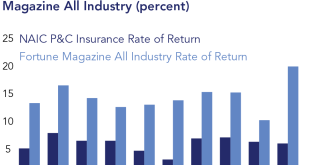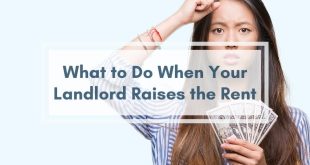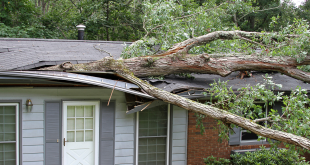Homeowners across the nation are facing increasing pressure as insurance companies implement strategies that consumer watchdogs say are detrimental to policyholders. From increasing deductibles to limiting coverage for specific perils, a concerning trend is emerging that threatens to leave homeowners financially vulnerable. Experts warn that the current trajectory is unsustainable, potentially leading to widespread underinsurance and significant hardship in the event of a disaster.
The Rising Tide of Insurance Costs
Are you noticing your homeowners insurance creeping up, like, every single renewal? You’re not alone. It feels like every year, the bill gets a little bit higher, and you start wondering if you’re insuring a mansion instead of your perfectly normal house. It’s a widespread issue, and it’s not just a minor inconvenience; it’s becoming a real financial burden for many.
Increased Premiums and Deductibles
So, what’s actually happening? Well, premiums are going up, no surprise there. But it’s not just that. Deductibles are also on the rise. Meaning, you’re paying more before your insurance even kicks in. It’s like the insurance companies are trying to make it harder and harder to actually use your insurance. What’s the point of having it, then, right?
Factors Contributing to Rising Costs
Why all this cost inflation? A big part of it boils down to increased risks. We’re seeing more frequent and severe weather events – hurricanes, wildfires, floods… you name it. These disasters cause massive damage, and insurance companies have to pay out. To cover those costs (and, you know, still make a profit), they’re passing them on to you. I guess that makes sense, in a twisted way. But still, ouch.
Coverage Restrictions: A Growing Concern
And it’s not just the money. It’s also what your policy covers (or doesn’t). A lot of homeowners are finding that their policies have sneaky little restrictions they didn’t even know about. That’s where it gets really scary, like finding out you’re not covered when you really need it. It’s a pretty raw deal, if you ask me.
Limitations on Water Damage Coverage
Water damage is a classic example. Some policies are now limiting coverage for certain types of water damage. Maybe it’s slow leaks, maybe it’s damage from a burst pipe if you weren’t home for a few days. The fine print is getting finer, and you really have to read it carefully, or you could be in for a nasty surprise. And who really reads all that stuff? Not me, that’s for sure.
Exclusions for Specific Weather Events
And get this: Some insurance companies are even excluding coverage for specific weather events, especially in areas prone to certain disasters. If you live in a wildfire zone, you might find it harder to get comprehensive fire coverage. Coastal areas? Flood insurance is becoming a minefield. It’s like they’re picking and choosing what they want to cover, leaving homeowners to fend for themselves with increasing “acts of God.”
The Impact on Homeowners
Okay, so what does all this mean for you, the average homeowner? Let’s just say it’s not pretty. The increase in homeowners insurance costs and coverage limitations are creating some serious problems. It feels like we’re being squeezed from all sides.
Financial Strain and Affordability Issues
For many families, these higher premiums and deductibles are a real strain on the budget. It’s money that could be going to groceries, kids’ education, or, you know, a vacation! Instead, it’s going to insurance companies, just to maintain the same (or even less) coverage. It’s getting to the point where some people might not be able to afford homeowners insurance at all. Can you imagine the stress?
Difficulty Obtaining Coverage
And if you live in an area deemed “high risk,” you might find it difficult to get coverage at any price. Some insurance companies are simply refusing to write policies in certain areas, leaving homeowners scrambling to find any kind of protection. It is reaching a breaking point.
Expert Analysis and Recommendations
So, what can be done? What are the watchdogs saying? Well, they’re calling for more oversight and regulation of the insurance industry. They argue that insurance companies need to be held accountable for these rising costs and coverage restrictions.
The Role of State Regulators
State regulators have a crucial role to play here. They’re the ones who can approve or deny rate increases, and they can also enforce regulations to protect consumers. But are they doing enough? Some say they’re too cozy with the insurance industry, and not aggressive enough in protecting homeowners. Hmmm, makes you wonder, doesn’t it?
Potential Legislative Solutions
There’s also talk of potential legislative solutions. Maybe it’s time for new laws that require insurance companies to provide more transparent pricing and coverage information. Or maybe it’s time to explore alternative insurance models that are more affordable and sustainable. Something needs to change; that much is clear.
Navigating the world of homeowners insurance these days feels like trying to solve a Rubik’s Cube blindfolded. The rising costs, the shrinking coverage, it all adds up to a stressful and uncertain situation for homeowners everywhere. Keep an eye on your policy, shop around for the best rates, and maybe even get involved in advocating for change. It’s your home, your investment, and your peace of mind, after all. Don’t let it all go up in smoke – figuratively, or literally. It is reaching a breaking point, so stay informed and take action.
 seeme
seeme




